Samburu National Reserve, in the arid, northern parts of Kenya, isn’t anywhere near as well-known as the country’s Maasai Mara National Reserve. In fact, it’s among the least-visited of Kenya’s national reserves, parks, and conservancies. While it’s no secret that safari vacations are growing in popularity, it’s still free from the crowds of other parks — which may be why in-the-know travelers are setting their sights on the gorgeous 64-square-mile park. In 2020, the Maasai Mara saw 15 times the number of visitors of Samburu, and Nairobi National Park saw nearly 50 times as many visitors. Even Lake Nakuru National Park sees more visitors.
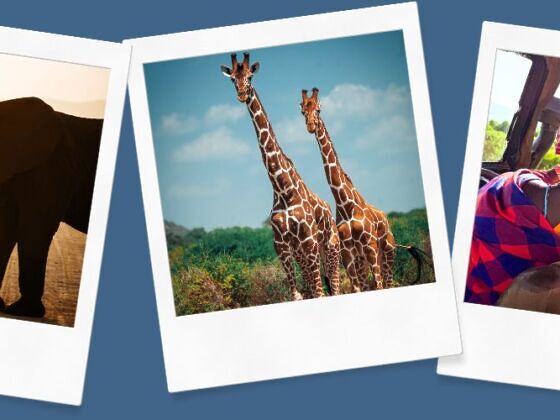

The Lesser-Known Wildlife Reserve Where In-the-Know Travelers Are Going on Safari
But it’s not just the crowd-free experience that makes Samburu special: it’s a group of animals literally called the “Samburu Special Five.” The five unique species are endemic to the region and are extremely rare to see almost anywhere else in Kenya. And when you do see them — which you likely will if you do more than one game drive — you’ll see them in a peaceful environment. Because it has fewer visitors, travelers get the chance to watch wildlife encounters with fewer vehicles crowding the scene.
View this post on Instagram
Fortunately, though the crowds are smaller, the lodging options are just as impressive as any other park in the country. I stayed in a suite at Soroi Larsens Camp, which included not just a gorgeous tented room with a private plunge pool, but also a lofted outdoor bed high above the reserve, allowing me to sleep under the stars while listening to the sounds of birds, elephants, and even roaring lions.
I did my Kenya trip with Alluring Africa, an established safari company that plans custom trips throughout Africa. While you certainly can visit Samburu, Larsens Camp, and other parts of Kenya without using a travel company, I appreciated the perks of traveling with a company, as well as having someone local to deal with transportation and smaller planning details.
If you’re thinking about planning a safari trip, you certainly don’t want to skip popular destinations like the Maasai Mara or Amboseli — but you will want to add a few extra days to see the landscapes and stunning wildlife within Samburu National Reserve.
Rare animals you may see in Samburu National Reserve
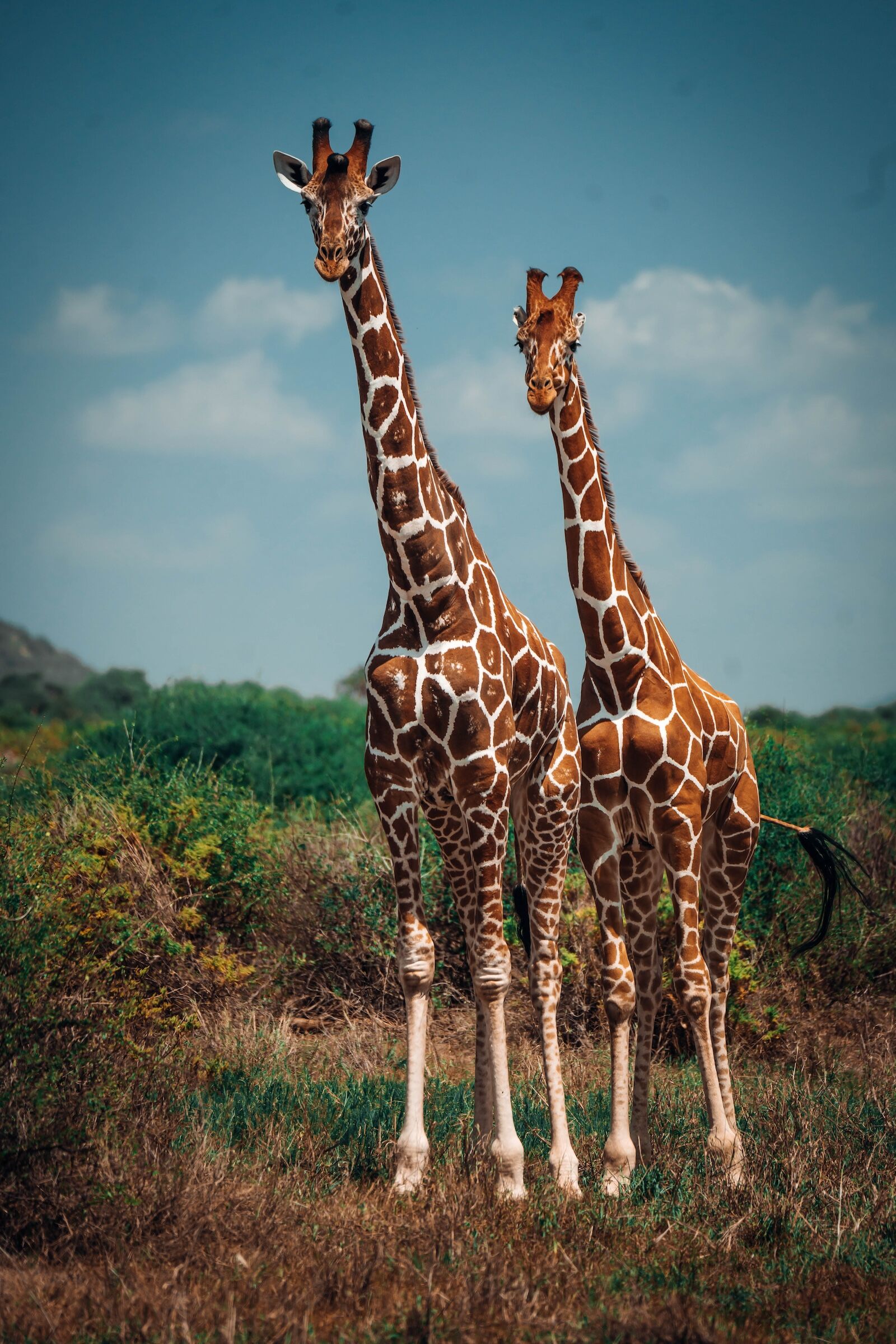
A pair of unique reticulated giraffes in Samburu National Reserve, Kenya. Photo: Suzie Dundas
In Samburu, guides speak about how the Samburu Special Five makes the reserve different from places like the more popular Maasai Mara, where the focus is typically on the traditional Big Five (lion, leopard, elephant, rhino, and buffalo). Samburu’s version of the Big Five are the Grevy’s zebra, reticulated giraffe, Beisa oryx, Somali ostrich, and gerenuk.
During my three-day visit, we saw four of the five species each day. The only one we nearly didn’t see was the Somali ostrich, but fortunately, we saw a few on our drive back to the Samburu airstrip on our last day, rounding out our sighting of all five rare species.
Camera roll: scenes from Samburu

We arrived at Samburu National Reserve after a quick one-hour flight from Nairobi. The team from Larsens Camp picked us up at the airstrip (and even met us with cold beers!) On the drive to the camp, we spotted these elephants crossing in front of our open-air vehicle. It was our first sighting and we thought we were so lucky — but we got even luckier, as elephants got this close to our vehicle on nearly every drive. (Photo: Suzie Dundas)
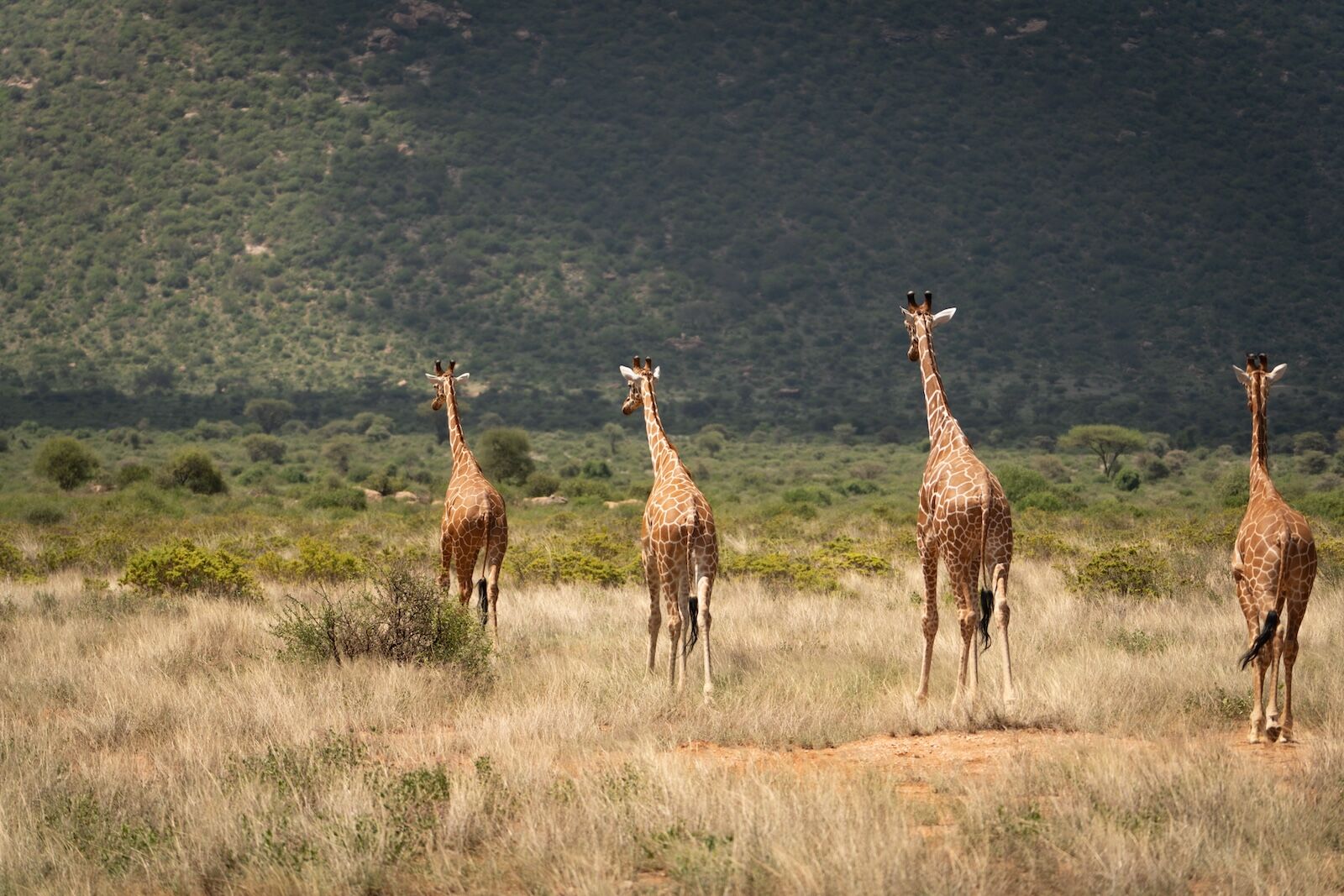
This group of reticulated giraffes (Giraffa reticulata) was slowly making its way through the savannah in Samburu National Reserve as we arrived. The reticulated giraffe is one of the “Samburu Special Five” species and is unique to northern Kenya. They can be up to 18 feet tall and mostly feed on acacia trees.
Reticulated giraffes have a distinctive polygonal pattern, with with sharp edges and white lines in between. It looks almost like a net — hence the name “reticulated,” which means net-like. Their populations have declined in recent years due to habitat loss and poaching, making Samburu one of the few places where you’re all but guaranteed to see one. We saw dozens on every game drive, and I could watch them from my outdoor plunge pool at Soroi Larsens Camp. (Photo: Suzie Dundas)
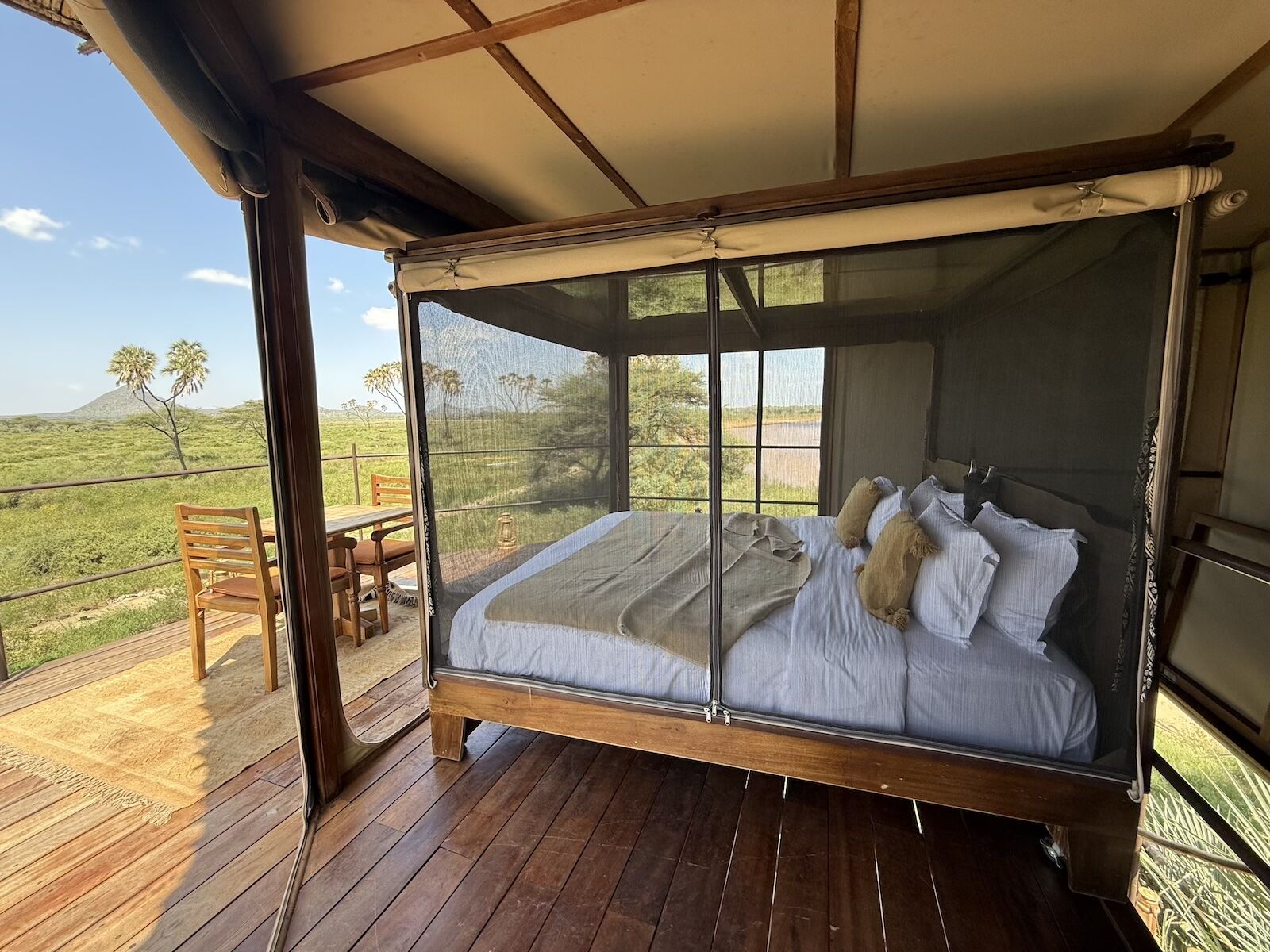
I spent three nights in Samburu at Larsens Camp, a recently renovated tented camp on a river bank. My room was amazing, with a huge four-poster bed, canvas and mesh walls with floor-to-ceiling views, large outdoor living spaces, and even a private plunge pool overlooking the reserve and grazing giraffes. But the best part of the room was this: the star bed.
Totally separate from the room was this raised platform two stories above the reserve. When you want to sleep under the stars, the Larsens Camp staff will move the bed forward and roll back the roof. Though I was there in the rainy season, I had clear skies every night. The mosquito netting works extremely well, and since it’s dark, it doesn’t attract bugs or bats. I didn’t sleep that well, but in the best way possible — it was absolutely delightful to wake up here and there to the sounds of lion roars or elephants trumpeting. Below the lofted bed is an outdoor bathroom, so you don’t have to go back into your actual room all night. (Photo: Suzie Dundas)
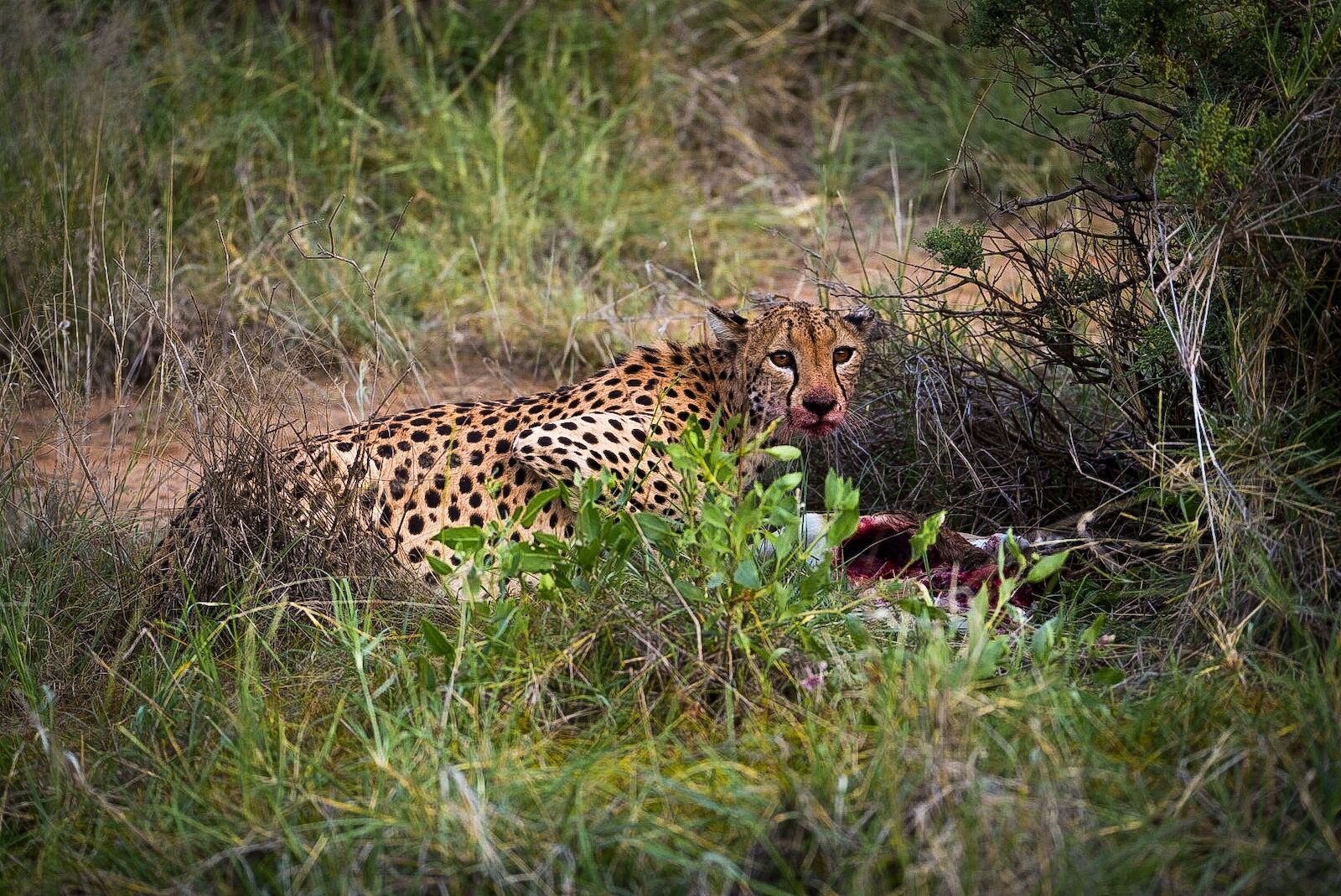
I was thrilled to capture this photo of a cheetah (Acinonyx jubatus) in Samburu National Reserve enjoying a recently caught meal in the tall grass. They’re the fastest animals on land, as everyone learns from a young age, and can run up to 70 mph to chase down prey. Samburu provides an excellent habitat for the elegant predators, thanks to its abundant wildlife and combination of open terrain for hunting and shrubby grasslands to hide in while eating. Unlike lions or leopards, cheetahs hunt during the day to avoid competition from nocturnal predators, such as hyenas. But they have to eat quickly: while their lightweight build helps them achieve top speeds, it also means they can easily lose a kill to species like hyenas and jackals.
Spotting a cheetah is somewhat rare in Samburu as their numbers are lower compared to other carnivores in the area — there are only about 10 in the reserve. However, our guide had a wildly good eye for spotting them and knew where they like to hang out, affording us this rare chance to see one up close. (Photo: Suzie Dundas)
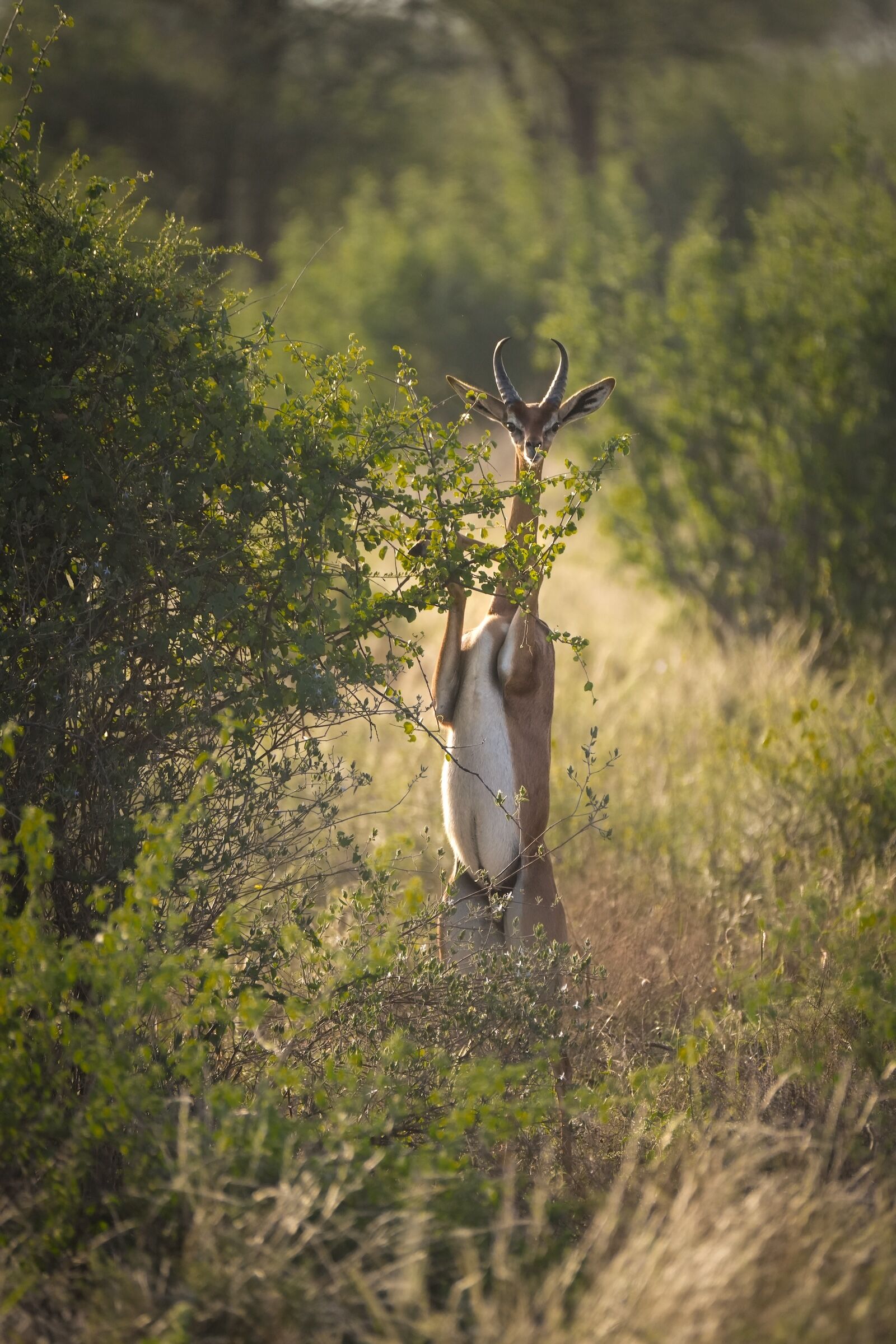
It’s always the “Big Five” travelers want to see on safari, but the gerenuk (shown here) was one of my favorite sightings of the whole trip, mostly for their endearingly goofy appearances. It’s called Litocranius walleri but often called a “giraffe gazelle,” for obvious reasons. Its long neck allows for unique feeding behavior (and vice-versa, evolutionarily speaking): it stands on its hind legs to browse from higher branches. That, combined with their small heads, allows them to reach leaves and branches other herbivores can’t.
The gerenuk population has declined about 25 percent in the last decade or so, primarily due to habitat loss and human activities like road construction and agriculture, which disrupts their access to food and shelter and makes them more vulnerable to predators. (Photo: Suzie Dundas)
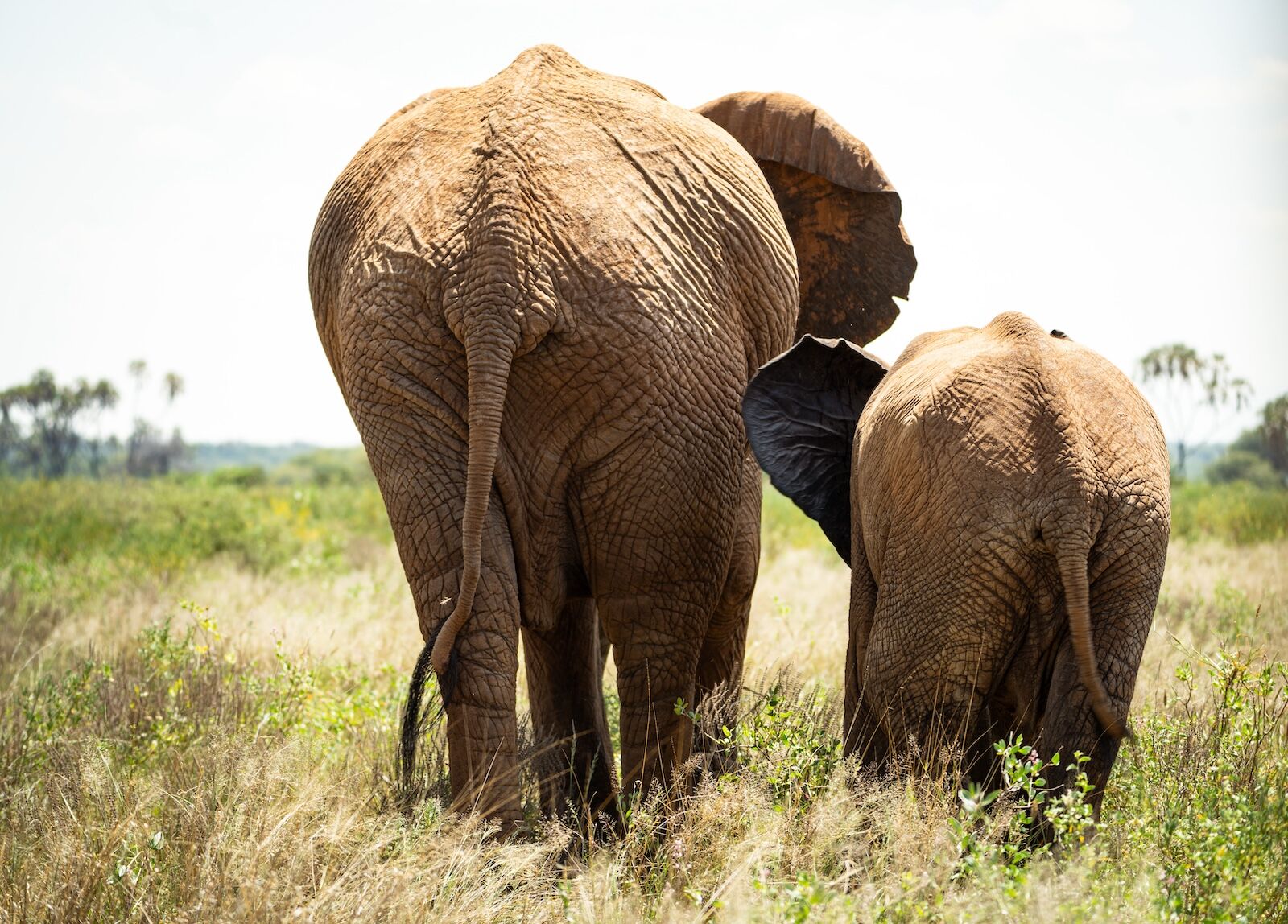
I’ve been lucky enough to do lots of game drives around the world, but aside from in Sri Lanka, I’ve never seen large herds of elephants in such numbers. We saw plenty of baby elephants with mothers, which isn’t unusual, as elephant calves stay with their moms for up to three years. During that time, they learn skills related to navigation and survival. While we were in Samburu, we saw a mother teaching her calf how to swim and wash off in the river, using her trunk to block the playful baby from moving too far down the river. (Photo: Suzie Dundas)
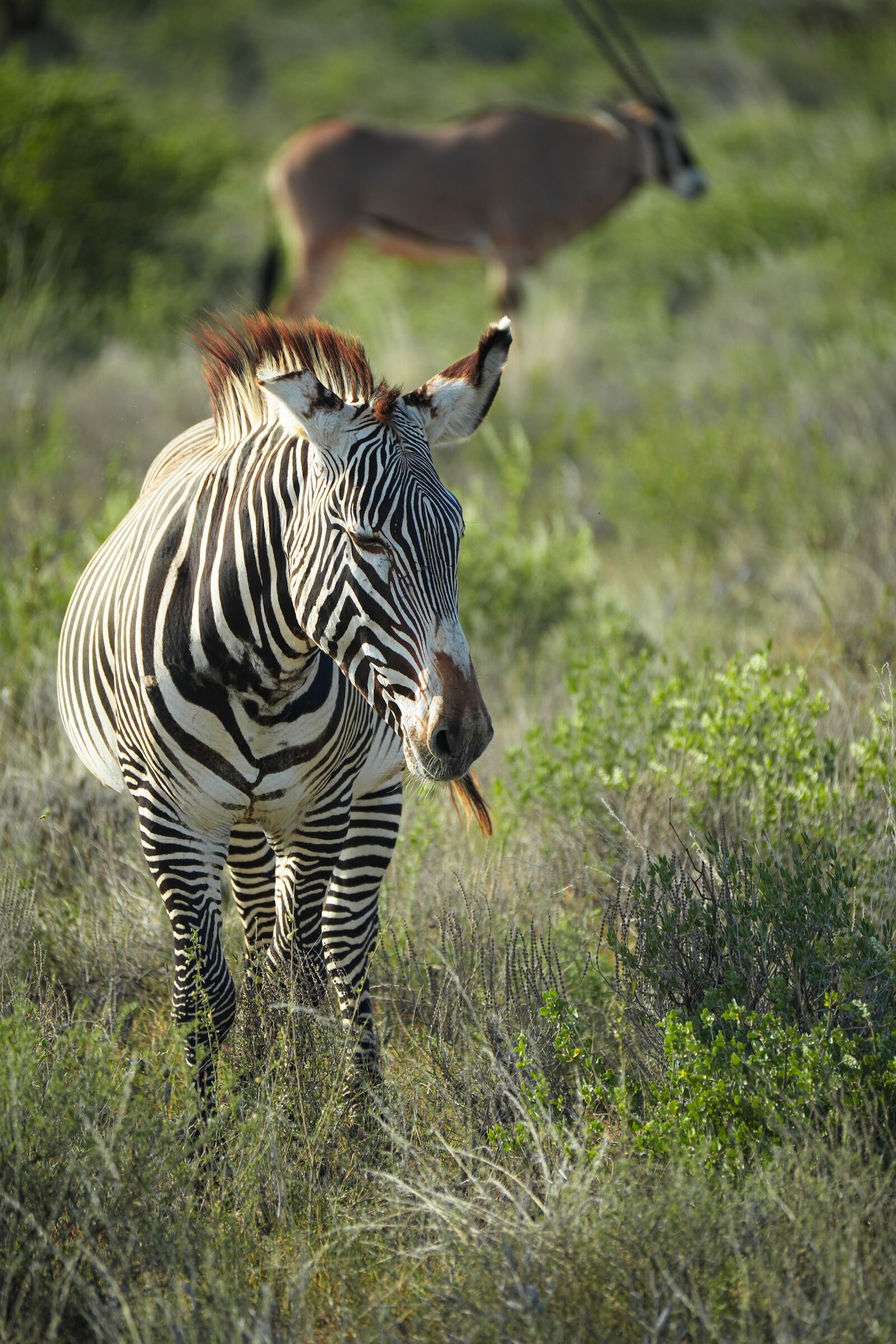
The Grevy’s zebra is the largest and most endangered of the three zebra species. It’s notably different from other species for its thinner, tighter stripes, and fully white belly. It was once widespread across East Africa, but its population has declined to fewer than 3,000 individual animals, with Samburu serving as a critical conservation habitat. In the back is a Beisa oryx, also one of the Samburu Special Five. The two species are often seen in close proximity. (Photo: Suzie Dundas)
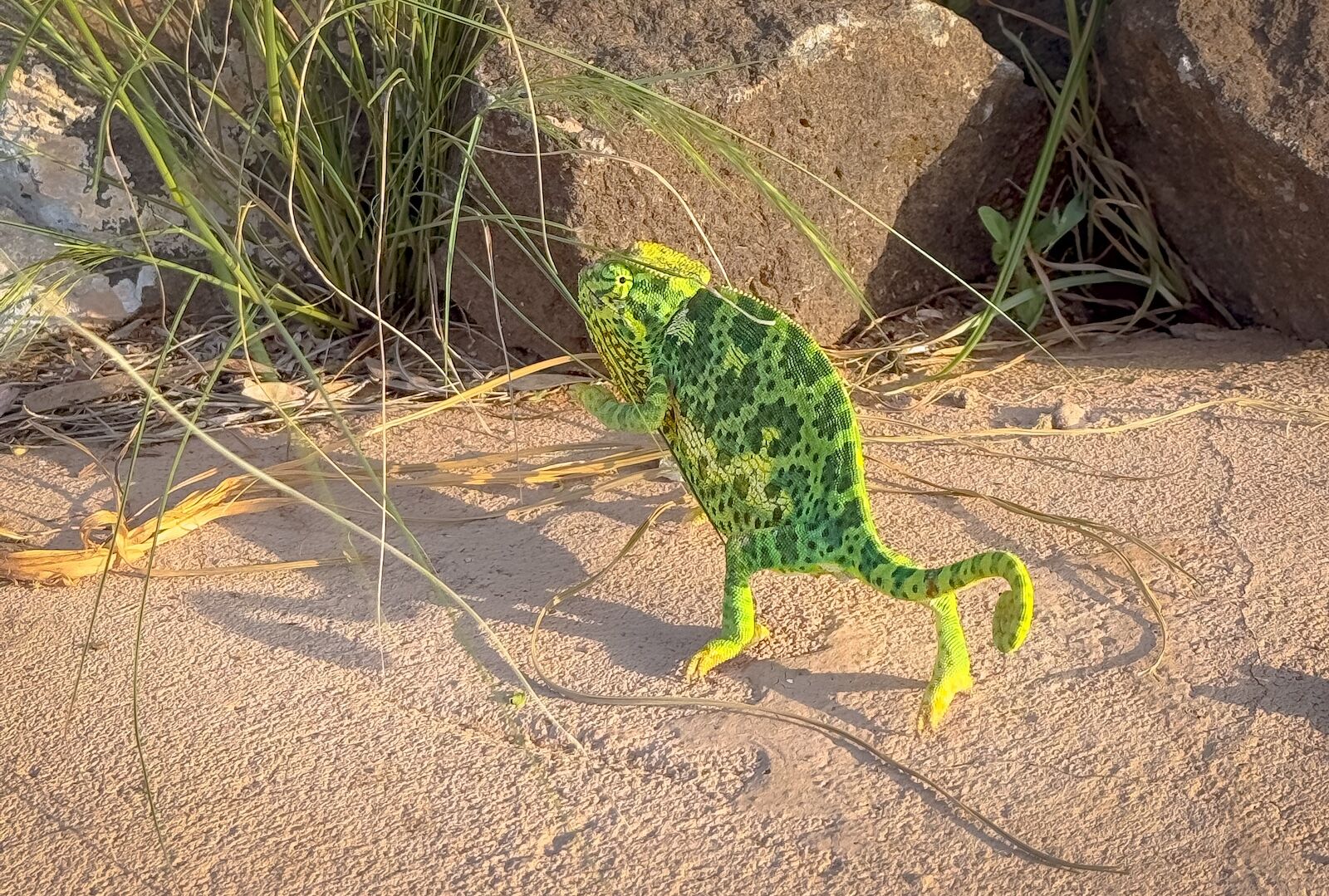
This vibrant critter is a flap-necked chameleon, or Chamaeleo dilepis. I’d never seen one in the wild before and didn’t even realize it was a chameleon, until I watched it for a while and noticed it had gone from taupe to green to dark brown once it snuck into the grass. They’re part of a fascinating group of reptiles known for their zygodactyl (bird-like) feet, long prehensile tails that can grip things, and independently rotating eyes, allowing them to look in two directions simultaneously.
In Samburu, sightings aren’t exceedingly common, as they tend to be solitary and secretive, not to mention hard to find. However, during the cooler parts of the day, especially in the morning, you may catch them basking or cautiously crossing open ground, as seen here. I spotted this one crossing the walkway on the way to my room at Soroi Larsens Camp. (Photo: Suzie Dundas)
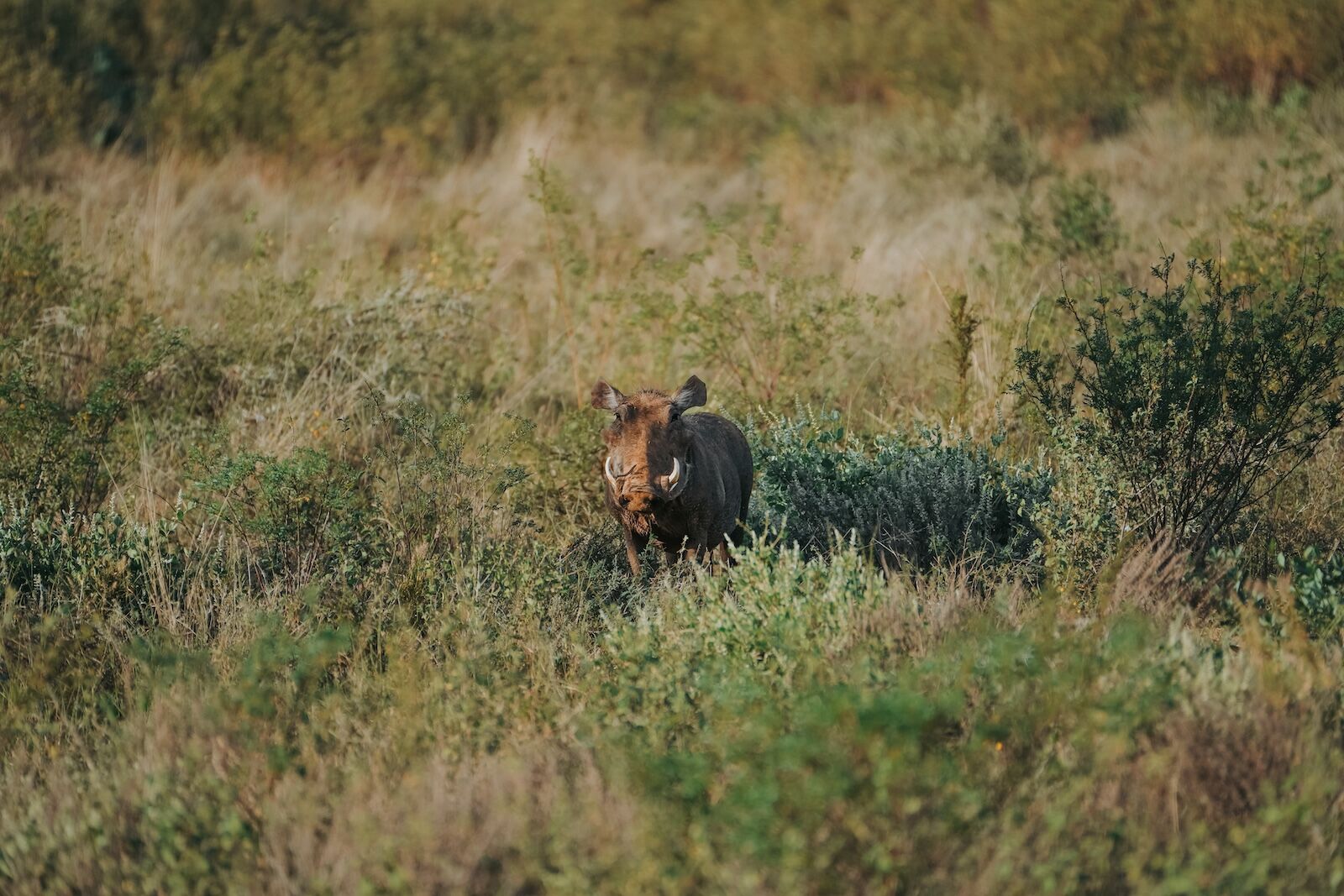
Warthogs are common throughout Kenya. They’re actually quite cute in person, with fuzzy ears and giant noses that wrinkle when they snort. They’re not hard to spot but can be a bit hard to photograph, since they’re brush-colored and short enough that they’re often obscured by grasses, especially when burrowing. It’s not uncommon for other animals like mongooses to move into warthog burrows once the pumbas have moved on. (Photo: Suzie Dundas)
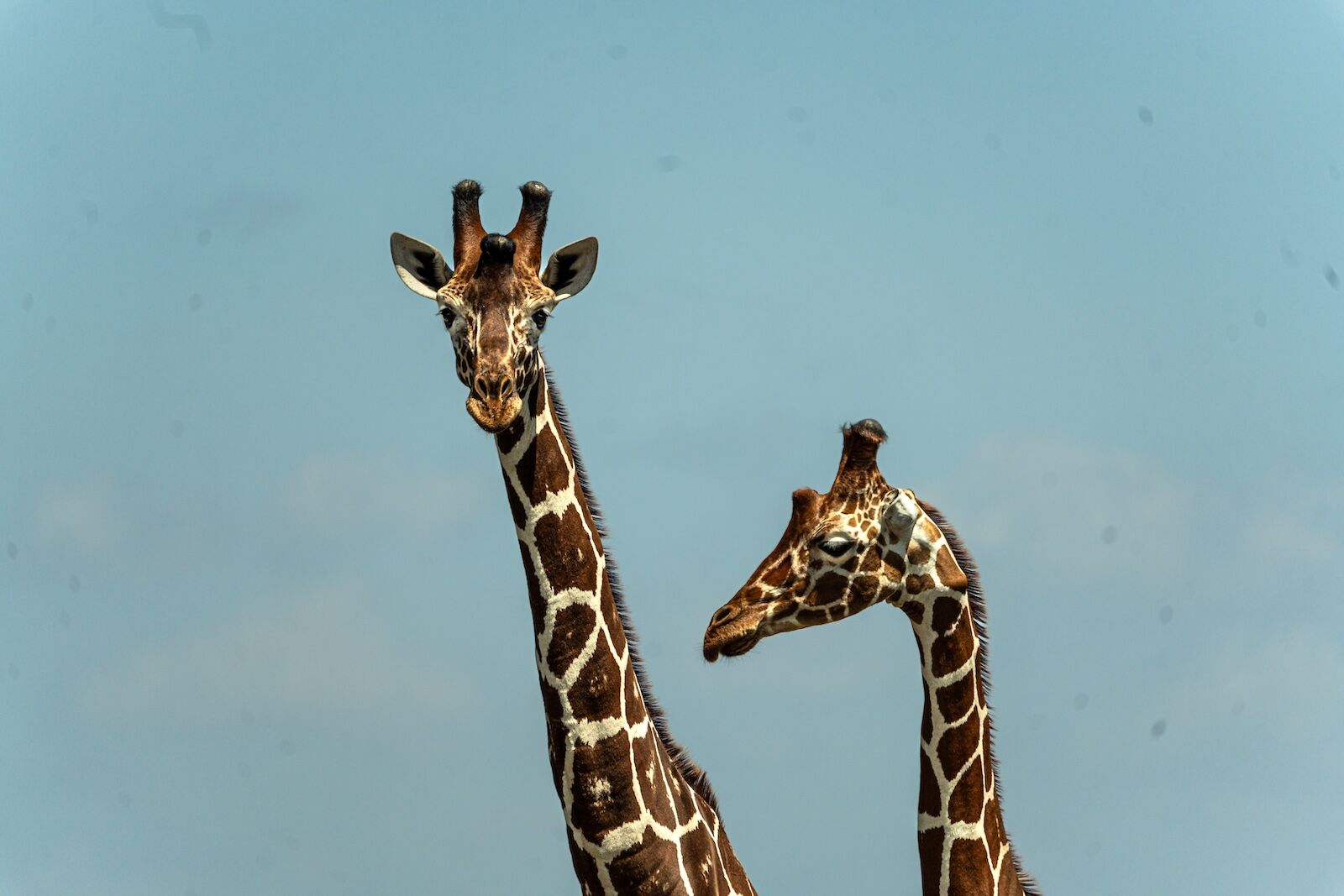
It’s shockingly easy to photograph reticulated giraffes in Samburu National Reserve. In fact, there were many times when they were too close for me to use my nice DSLR camera, and I had to whip out my iPhone instead. It’s lucky that they’re common in Samburu, as their population has declined by about half in the past three decades. Today, fewer than 16,000 individuals remain in the wild. Many anti-poaching organization throughout the country have focused specially on the species in the last few years, employing locals from nearby communities in conservation and protection efforts. (Photo: Suzie Dundas)
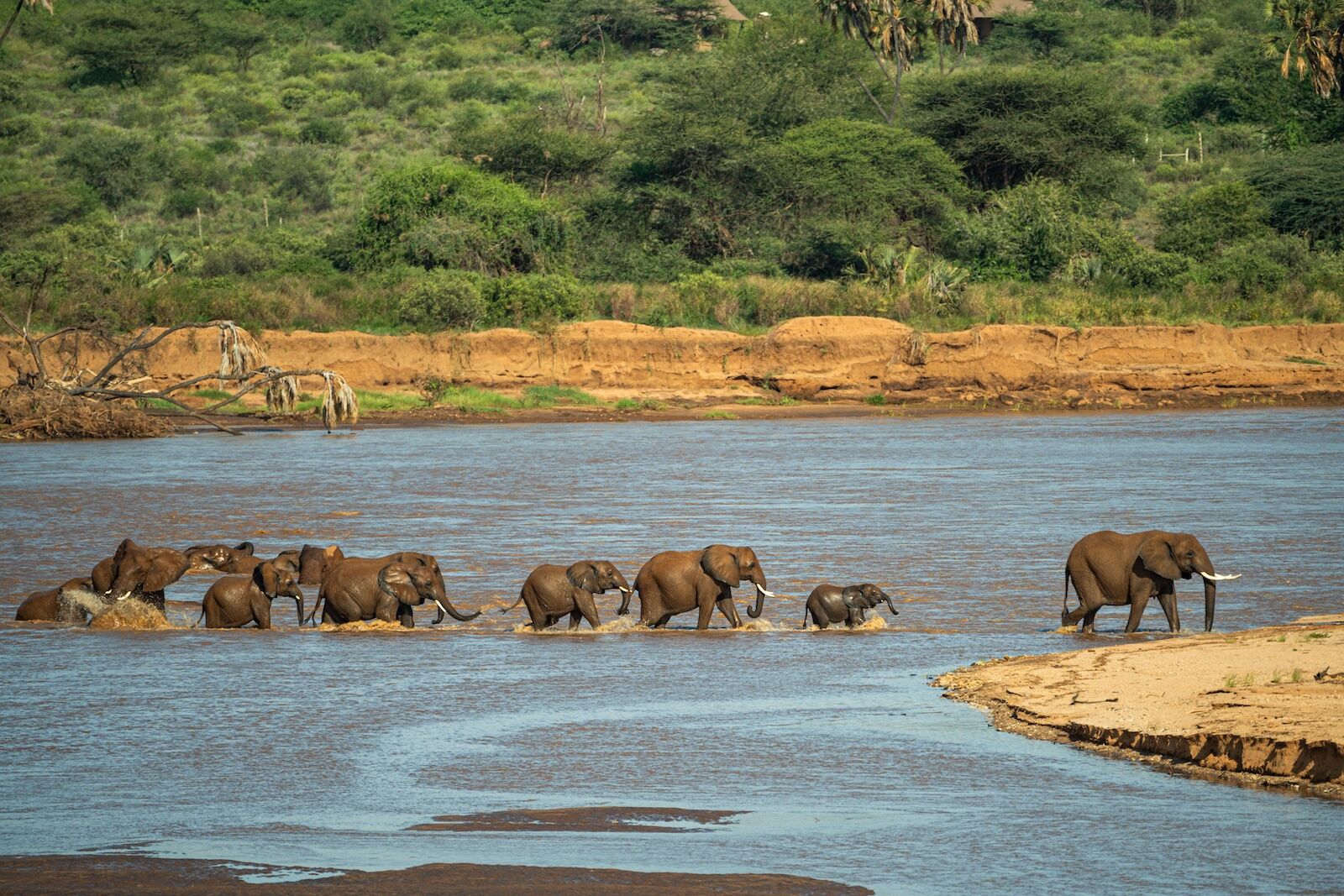
I took this photo of a family of African elephants crossing the Ewaso Ng’iro River from my room at Soroi Larsens Camp. My room was the furthest from the rest of the camp, and included a raised tower with amazing views of both the river behind the resort, and the vast grasslands surrounding the rooms. I saw elephants crossing through the river several times during my short stay, and even had to clean up one of our breakfasts in the bush in a hurry when a large herd decided the sunny clearing we were in looked like a good place to graze for a bit. (Photo: Suzie Dundas)
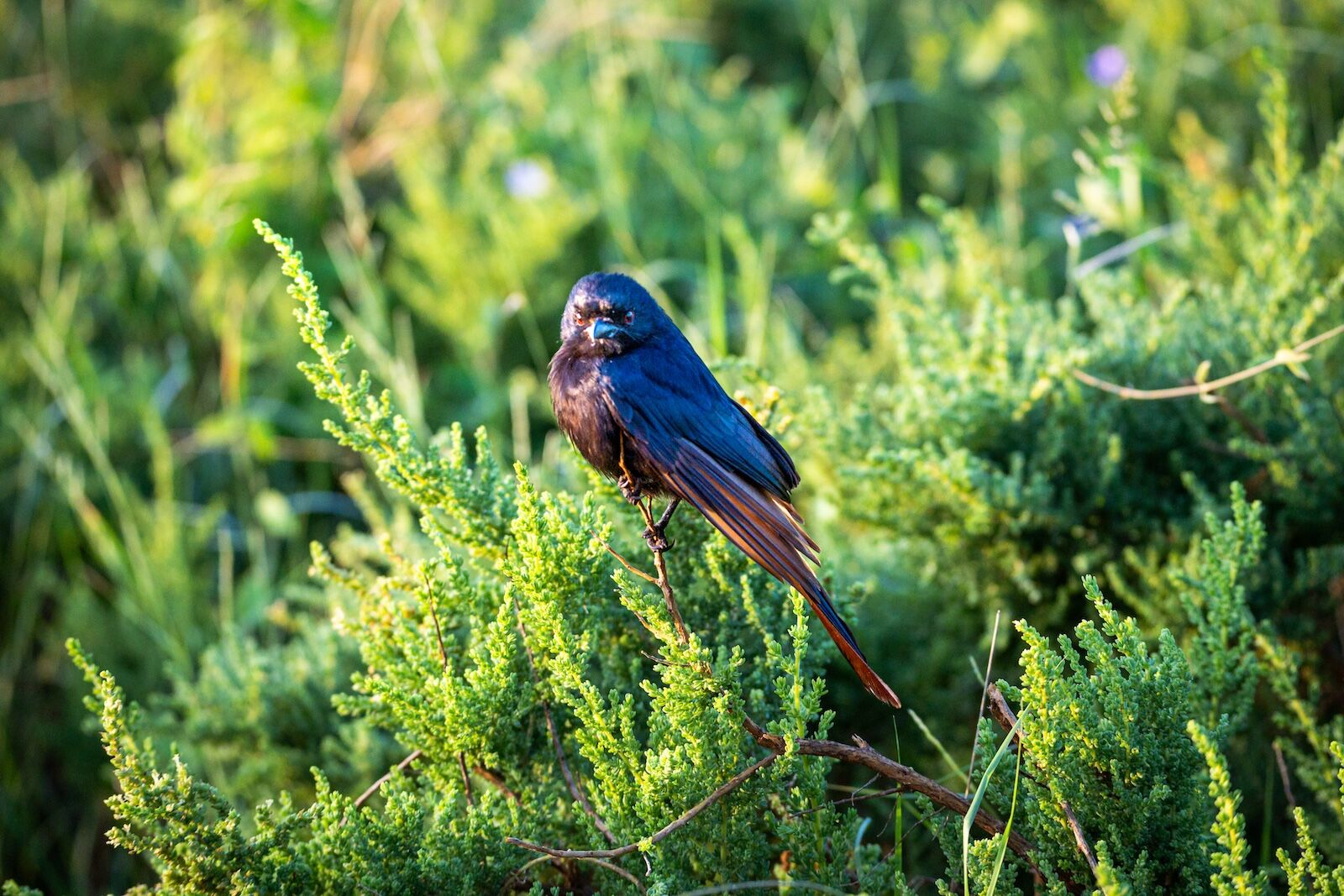
I’ve never been particularly into birding, but anyone who is knows that birds are extremely difficult to photograph: they’re small, they’re usually far away, and they tend to take off as soon as you begin to get close. But in Samburu, I lucked out, as we were able to get quite close to several birds. This one (a fork-tailed drongo) was only about 10 feet from our safari car. Drongos can mimic other bird calls and even some mammal calls, which can help them steal food or warn about nearby predators. They also tend to follow large herbivores like elephants and zebras, catching insects disturbed by the bigger animals’ movements. (Photo: Suzie Dundas)

Samburu National Reserve is home to around 900 African elephants, giving it one of the most stable populations in Kenya. They’re spotted more commonly in the dry season when they have to travel close to water, but even during the rainy season, we saw dozens every day. But despite their size and strength, they face threats from poaching and habitat loss. However, organizations based in Samburu National Reserve are working on their behalf, such as the Save the Elephants. It was founded in the early 1990s and leads research, tracking, and anti-poaching efforts aimed at protecting the animals. (Photo: Suzie Dundas)
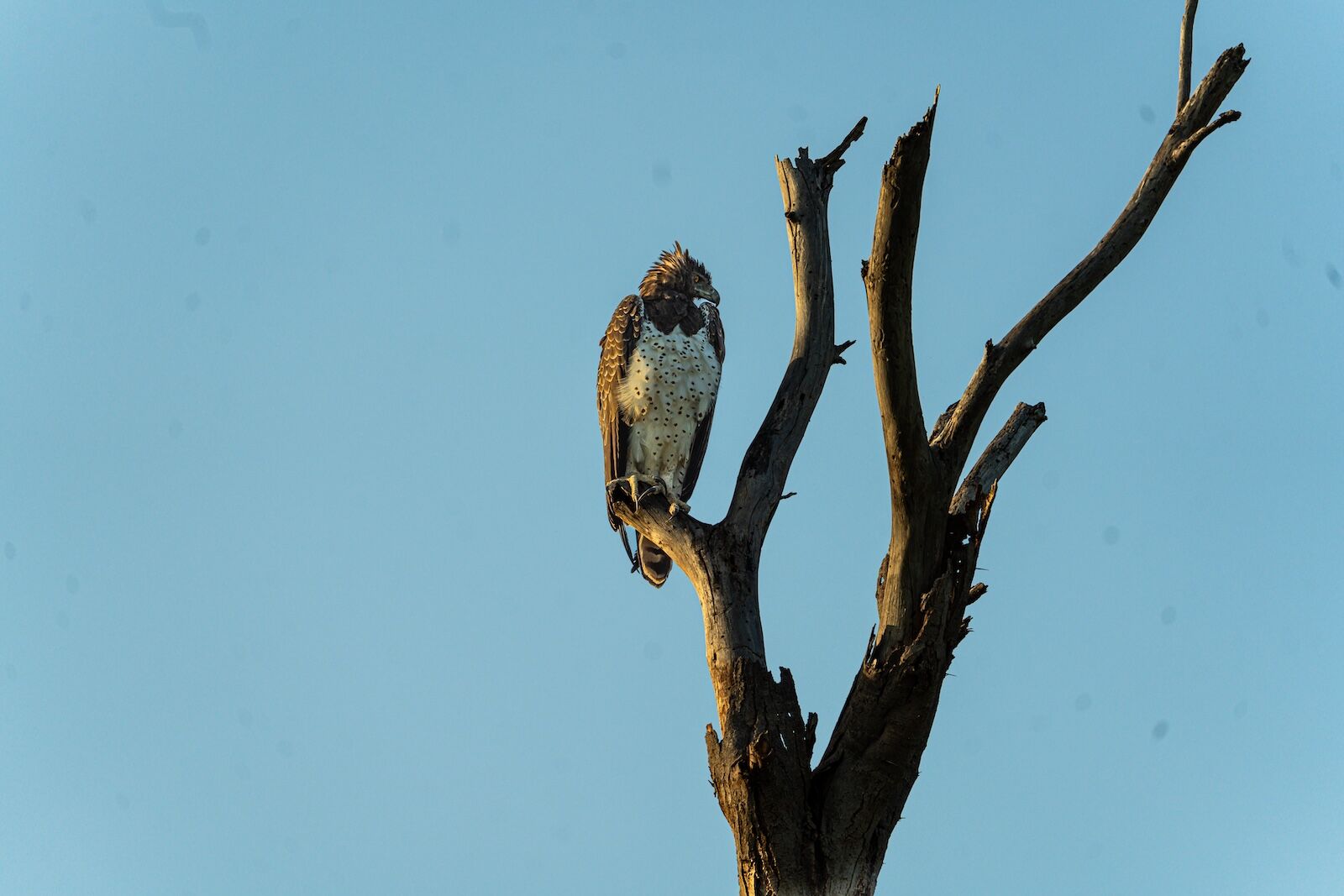
The martial eagle (Polemaetus bellicosus) is Africa’s largest eagle and one of the biggest birds I’ve seen in my whole life. They have a wingspan of up to 8.5 feet and can be nearly three feet tall. Because of their size, they can take down creatures as large as a baby antelope. They’re thriving in Samburu National Reserve, and we saw them a few times on morning game drives perched in trees, watching for potential prey from as far as three miles away. (Photo: Suzie Dundas)
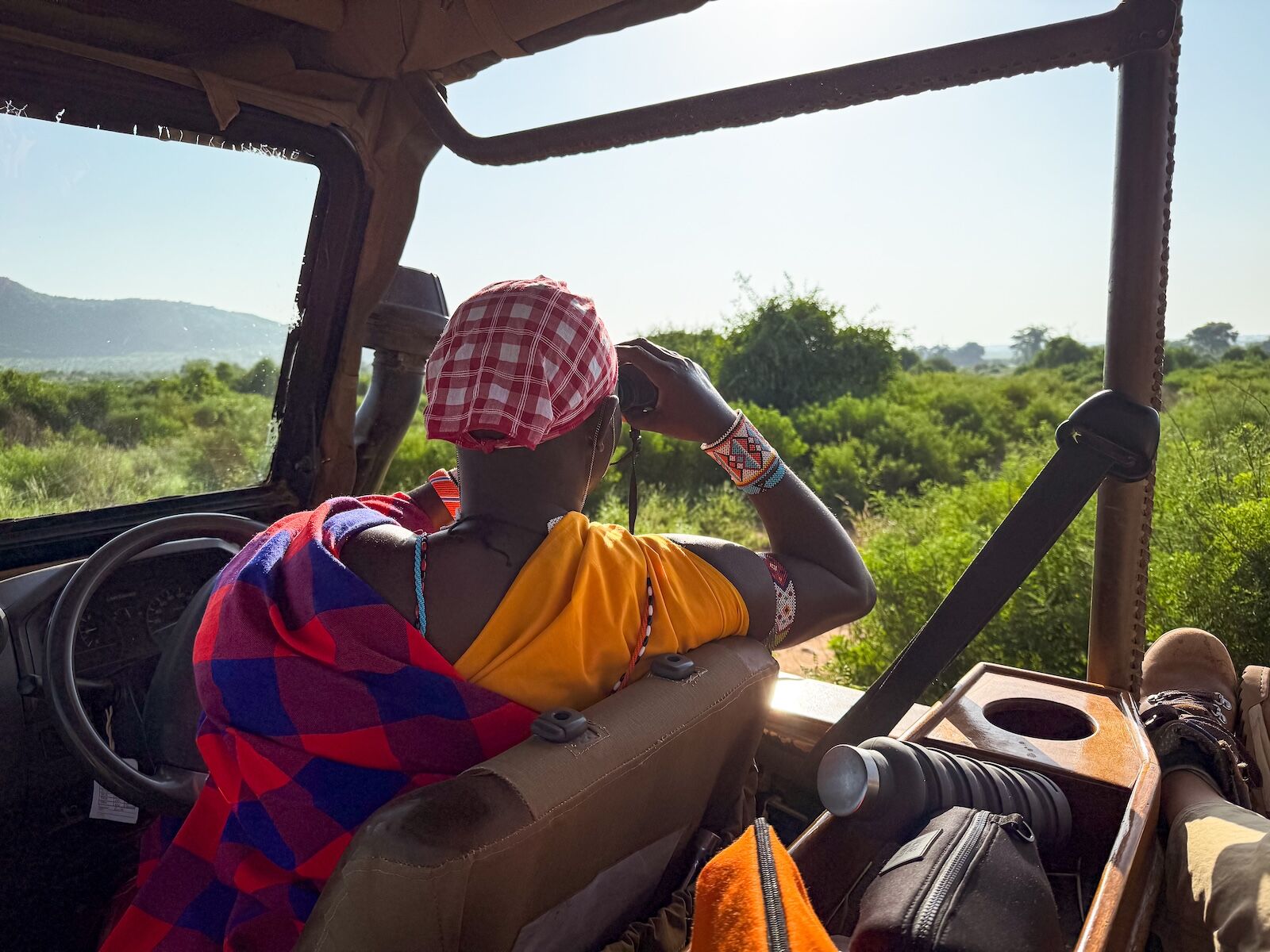
George, shown here hard at work, was our naturalist in Samburu National Reserve who works at Larsen Camp. Aside from being a fun and super-knowledgeable person, he was an incredibly impressive guide. His ability to spot animals from afar while driving helped us see species we’d never spot on our own, and he knew every animal, bird, and plant off the top of his head. He also asked us every morning what we wanted to look for and was pretty darn good at delivering. He was a great guide and we wished we could have just had him hang out with us for the rest of the trip, too. (Photo: Suzie Dundas)
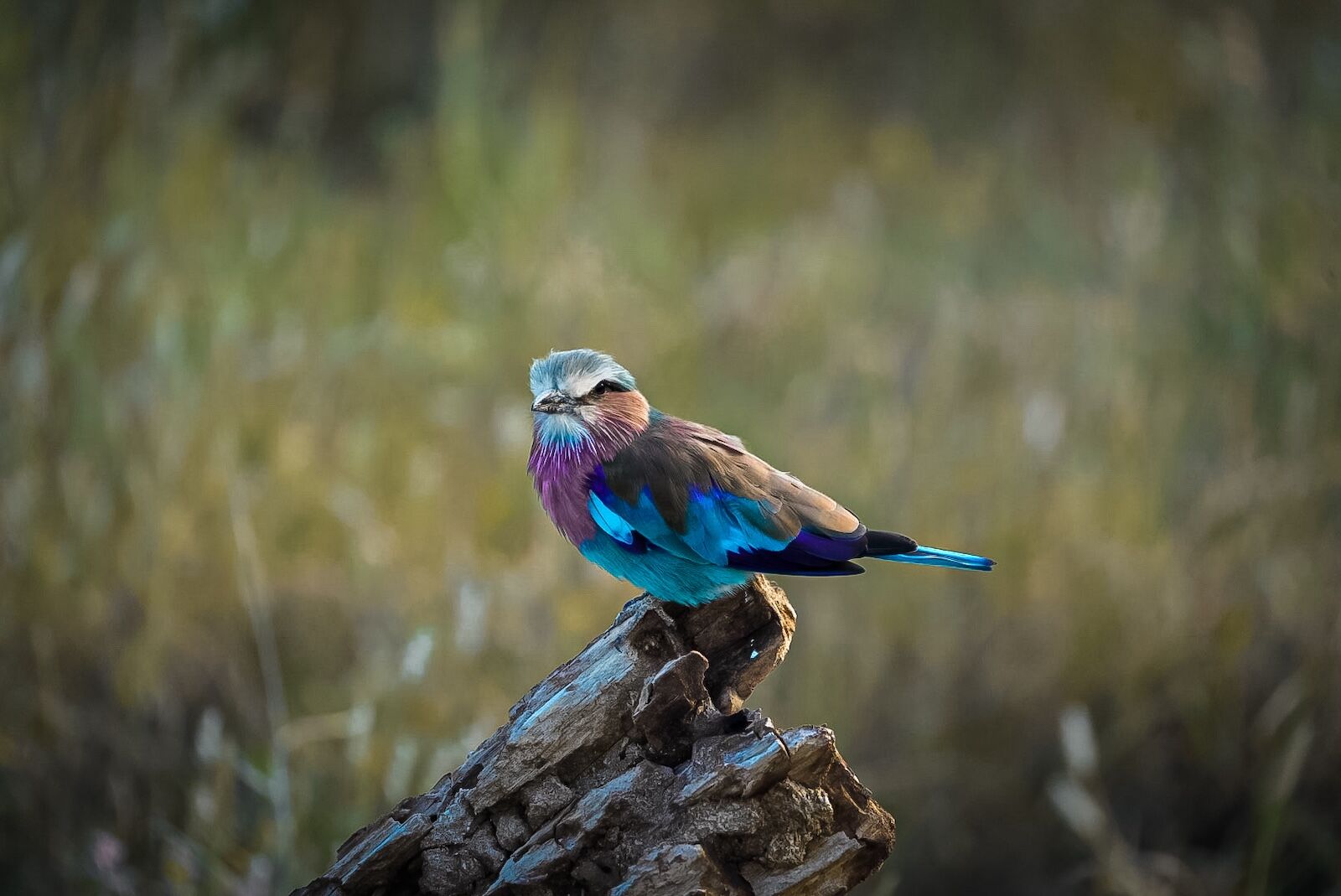
This is a lilac-breasted roller and is known as one of the most photogenic birds in Africa — which it certainly is. They get their name from the moves they make mid-air when trying to find mates or fight over territory. Fortunately, it’s a common sight, which makes Samburu a draw for birders and bird photographers, as it’s hard to take a bad photo of the rollers (unless they won’t sit still long enough). (Photo: Suzie Dundas)
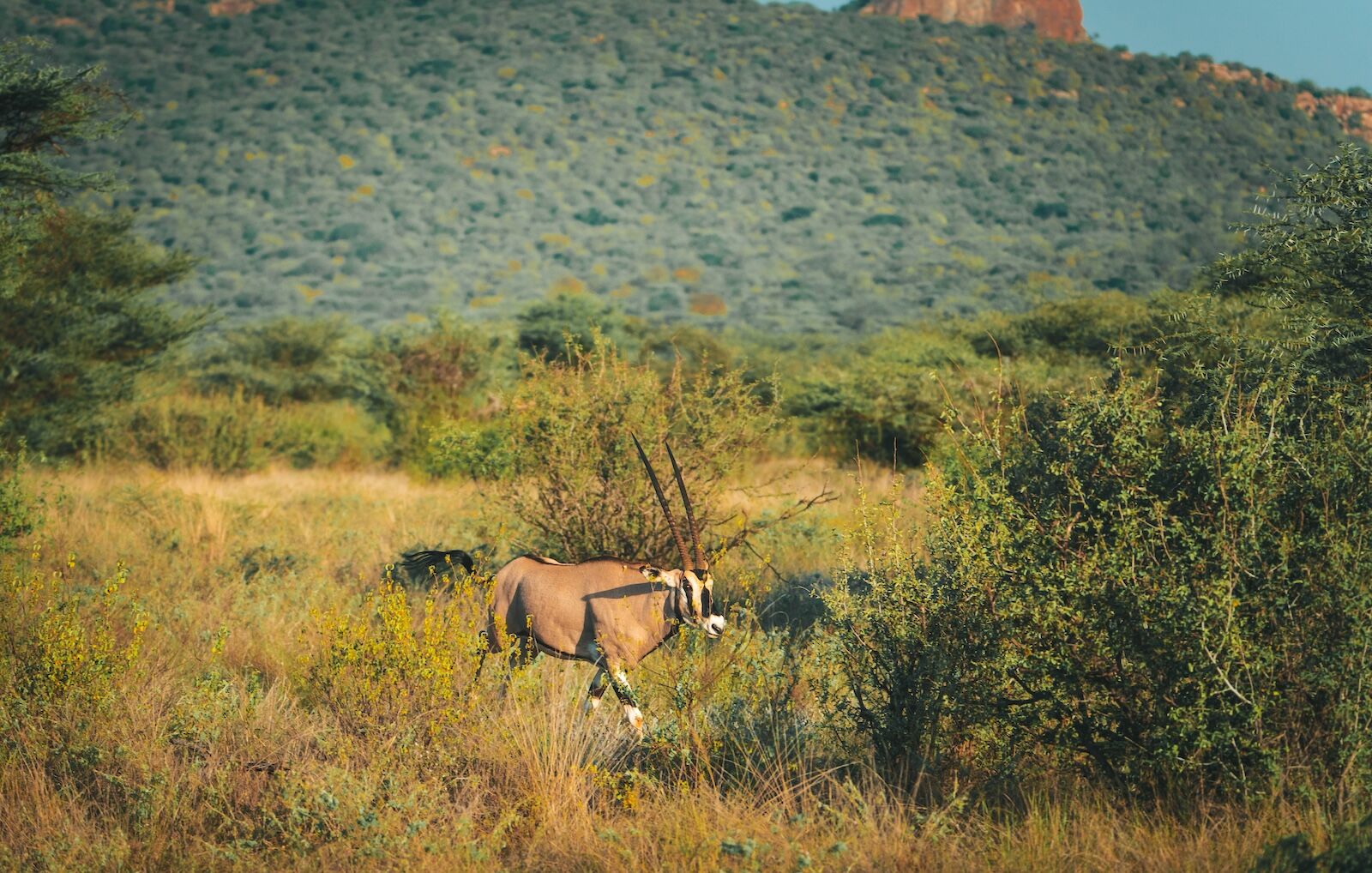
The Beisa oryx is one of the Samburu Special Five, and thrives in arid environments, where it can survive on minimal water. It’s rarely seen in other parts of Kenya, making Samburu National Reserve one of the best places to see the unique species. We saw them throughout the park, often near impalas, zebras, and other grazing herds. (Photo: Suzie Dundas)